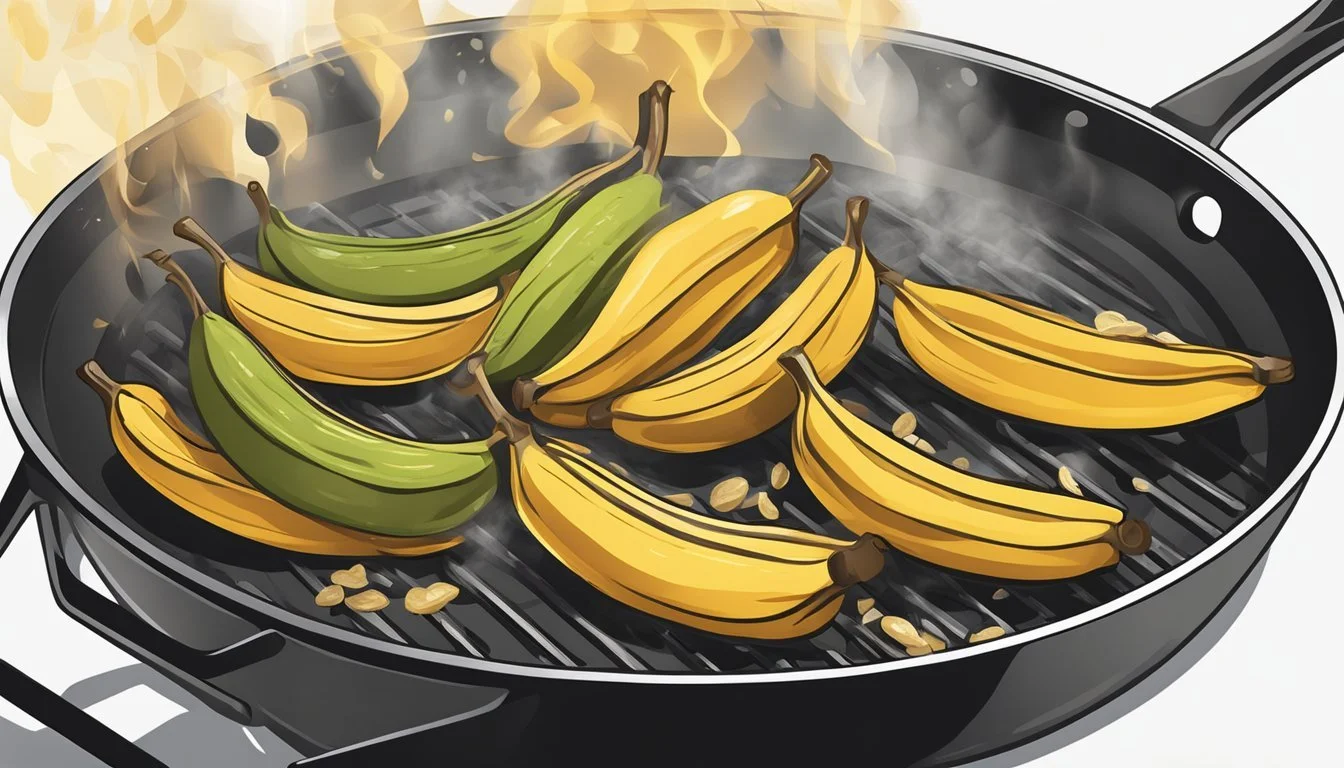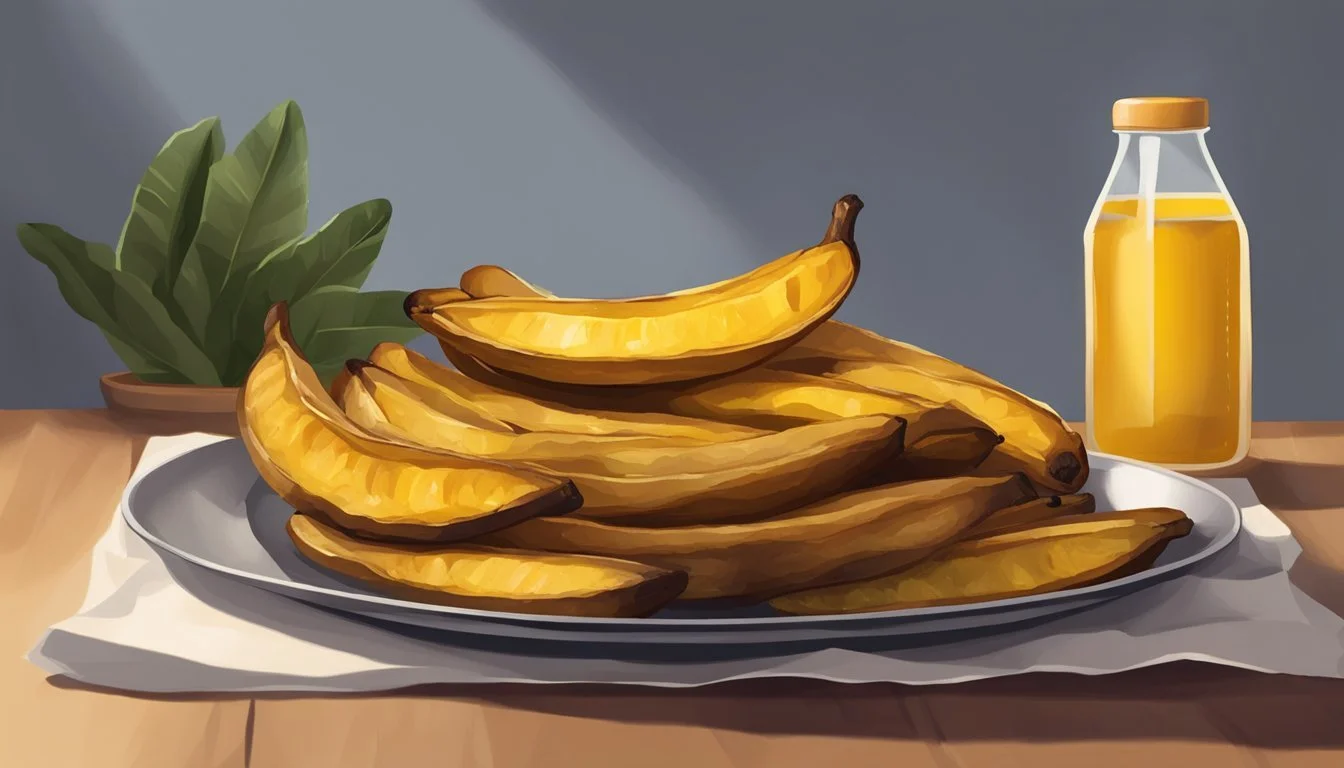Best Way to Reheat Fried Plantains
Tips for Crisp and Sweet Results
Reheating fried plantains properly is essential to maintaining their delectable crunch and inherent sweetness. Fried plantains are a beloved side dish and snack in many cuisines, prized for their versatility and rich flavor. When cold or left to go limp, they can lose the captivating texture that makes them so enjoyable. To recapture the essence of freshly cooked plantains, the reheating method must ensure they stay crispy on the outside and tender on the inside.
The challenge with reheating lies in achieving the perfect balance between temperature and cooking time, without drying out or burning the plantains. Many prefer using an oven or a stove, as these methods are capable of restoring the plantains' original crispness and warmth. The inherent sugars within the plantains need gentle heat to perk up, enhancing their natural sweetness without further browning or hardening the exterior. Selecting the right reheating technique can make a significant difference, transforming yesterday's leftovers into today's tasty treat.
Understanding Plantains
Before diving into the intricacies of reheating fried plantains, it's crucial to understand what plantains are, their particular characteristics, and their role in cuisine around the world.
Differences Between Plantains and Bananas
While plantains are relatives of bananas, they differ in several key aspects. Plantains are starchier and less sweet than bananas, making them less likely to be eaten raw. As plantains ripen, their skin turns from green to yellow and eventually black, just like bananas, albeit at a slower pace. However, unlike their sweeter counterparts, plantains are usually cooked before consumption, which brings out their sweet flavor.
Ripening Process of Plantains
The ripening process of plantains transforms their starches into sugars, thus increasing their sweetness. A green plantain is firm and starchy, much like a potato, and is suitable for dishes like tostones, or twice-fried plantains. As plantains mature, they become yellow and softer, and finally, when fully ripe, they turn black and develop a pronounced sweet flavor, making them perfect for maduros, or sweet caramelized plantains.
Nutritional Benefits of Plantains
Plantains are a nutritious food, offering a substantial amount of fiber which aids in digestion. They're also a good source of potassium, which helps in maintaining electrolyte balance. Regardless of their stage of ripeness, plantains provide essential nutrients that contribute positively to a balanced diet.
Different Types of Plantain Dishes
Plantains are incredibly versatile, and one can prepare them in various ways. The texture and sweetness of ripe plantains make them suitable for frying into maduros, which are soft and sweet. Unripe, green plantains are great for making savory dishes like tostones, which have a crispy texture and retain more fiber due to less sugar content. Whether sweet or savory, plantains are staples in many cuisines and can be incorporated into a myriad of dishes.
Preparation Before Reheating
To ensure fried plantains reheat to crispy perfection, proper storage and initial setup are essential steps that can't be overlooked.
Storing Fried Plantains for Reheating
Fried plantains should be stored in a manner that retains their texture and flavor. Once they have cooled down, but are still slightly warm, they need to be gently wrapped in paper towels to absorb excess oil. For short-term storage, placing the wrapped plantains in an airtight container and refrigerating is advised; this method is suitable when reheating within a few days. For longer storage, fried plantains can be frozen by arranging them in a single layer on a baking sheet, freezing them initially, and then transferring to a freezer bag, expelling as much air as possible.
Refrigerate: Up to 3 days in an airtight container with paper towels.
Freeze: Wrap in aluminum foil or place in a freezer bag, removing air to prevent freezer burn.
Pre-Reheating Setup
Prior to reheating, fried plantains should be brought to room temperature for even heat distribution. This requires taking them out of the refrigerator or freezer ahead of time. If refrigerated, 15-20 minutes should suffice, but frozen plantains might need an hour or more, depending on size and thickness.
For oven reheating, the oven should be preheated to 350°F. Plantains should be placed on either an oven-safe dish or lined baking sheet if they are being reheated from a refrigerated state. If reheating from frozen, a slight increase in overall reheating time will be needed to ensure they are warmed throughout.
Room Temperature: Allow refrigerated plantains to sit for 15-20 minutes, frozen plantains for over an hour.
Oven Setup: Preheat to 350°F; use an oven-safe dish or a baking sheet lined with aluminum foil.
Reheating Methods
Choosing the right reheating method can significantly impact the texture and flavor of fried plantains, making them as enjoyable as when they were first prepared. This section will cover various techniques suitable for different kitchen appliances to help maintain that desired crispiness and sweetness.
Oven Reheating Method
For individuals seeking to retain a crispy texture, reheating in the oven is favorable. Here's how one can achieve this:
Preheat the oven to 350°F (175°C).
Arrange the plantains on a baking sheet lined with parchment paper.
To help preserve moisture and avoid over-browning, cover the plantains loosely with aluminum foil.
Heat for approximately 10 minutes or until they are warm throughout.
Skillet Reheating Method
The skillet method is a quick way to revive the plantains' crispiness. This method involves:
Heating a small amount of olive oil in a skillet over medium heat.
Once hot, add the plantains in a single layer.
Cook for about 20-30 seconds per side or until they are heated through and regain a crispy edge.
Remove and drain on a paper towel to remove excess oil.
Microwave Reheating Method
While the microwave isn't the best choice for crispiness, it's the quickest. Microwave reheating involves:
Place the plantains on a microwave-safe plate.
Cover them with a damp paper towel to add moisture and prevent drying out.
Reheat in short intervals of 15-20 seconds to avoid overheating, checking for warmth.
Toaster Oven Reheating Method
A toaster oven provides a reheating environment similar to a conventional oven but is faster and uses less energy. To use a toaster oven:
Set it to 350°F (175°C) and allow it to preheat.
Position the plantains on the rack or on a small aluminum foil-lined baking sheet.
Reheat for about 5-8 minutes, checking that they have heated evenly and are pleasantly warm.
Air Fryer Reheating Method
An air fryer is an excellent appliance for reheating fried foods while keeping them crispy. To reheat with an air fryer:
Preheat the air fryer to 350°F (175°C).
Place the plantains in the air fryer basket in a single layer for even cooking.
Reheat for 2-3 minutes or until thoroughly warm and crispy.
Shake the basket halfway through to promote even heating.
Tips for a Perfect Reheat
When reheating fried plantains to maintain their crispiness and sweetness, one must use techniques that prevent them from becoming soggy or overly browned. To preserve the delectable qualities of this popular snack or side dish, it is essential to approach the reheating process carefully.
Oven Method:
Preheat the oven to 350°F (175°C).
Cut the plantains to the desired size before placing them on a baking sheet.
Cover with aluminum foil to keep them tender and prevent them from drying out.
Heat for 10 minutes or until they are warm throughout.
Pan-frying Technique:
Heat a small amount of vegetable oil in a frying pan to medium-high.
Place the plantains in the pan and reheat for 20-30 seconds on each side until they regain crispiness.
Transfer to a plate lined with paper towels to absorb any excess oil.
Pro Tips:
Avoid overcooking; it is key to preserving the plantain's delicate balance of texture and caramelized edges.
Seasoning: A light sprinkle of salt can enhance the flavor after reheating.
Retaining Crispiness: Let the plantains rest on a wire rack for a few minutes after reheating to ensure the edges stay crispy.
Remember, whether enjoying them as a delectable snack or as an accompaniment to a meal, these methods will keep your fried plantains at the pinnacle of flavor and texture.
Serving and Pairings
When it comes to serving and enjoying reheated fried plantains, the accompaniments and pairings significantly enhance the flavors. The right side dishes not only complement the sweetness and crispiness of the plantains but also create a harmony of taste.
Accompaniments
For a balanced meal, plantains are often served with a variety of side dishes:
Rice and Beans: A classic staple that pairs delightfully with the sweetness of plantains and offers a satisfying texture contrast.
Garlic Sauce: Drizzle or dip fried plantains in a savory garlic sauce to add a punch of flavor.
Dishes to Pair with Plantains
Plantains are a versatile side that complement a wide array of main dishes:
Meats: Whether it's roasted pork, grilled beef, or a succulent steak, the caramelized sweetness of fried plantains pairs well with the savory flavors of meat.
Fried Fish: A plate of light and flaky fried fish alongside crispy plantains is a duo that brings a tropical flair to the meal.
By considering these accompaniments and dishes, one ensures that the reheated fried plantains maintain their spotlight at the table, offering up a sweet and crispy side that stands up to bold flavors and hearty companions.
Safety and Health Considerations
Ensuring proper storage and understanding the health implications are critical when reheating fried plantains to maintain their crispiness and sweetness.
How to Store Fried Plantains Safely
The key to keeping fried plantains safe for reheating is proper storage. Immediate cooling is essential; they should be brought to room temperature before storage to prevent condensation, which can encourage bacterial growth. Once cool, store them in an airtight container and place them in the refrigerator. They can typically be stored safely for up to two days.
Health Benefits and Considerations of Reheated Plantains
Plantains offer numerous nutritional benefits; they are a good source of fiber and contain potassium, which support healthy blood pressure levels. When reheating, one should consider the potential change in their nutritional value. For instance, the reheating process can reduce levels of certain nutrients. Using sea salt sparingly during the initial cooking can help maintain the nutritional balance when reheated. Moreover, as they are low in sodium and high in carbohydrates, they can provide energy without excessive salt intake, which is a key consideration for a healthy diet. It's also important to use healthy cooking methods to preserve these benefits.
Conclusion
Reheating fried plantains correctly is key to enjoying their original taste and texture. The methods discussed deliver varying results, but the oven and stovetop techniques are generally the most effective.
Oven Method: Plantains can be warmed in a preheated oven at 350°F for about 10 minutes. This technique helps them retain moisture and prevents excessive browning when covered with foil.
Stovetop Method: A non-stick pan with minimal oil over medium heat for 2-3 minutes on each side gives the plantains a crispy exterior.
Users should avoid using microwaves as they can make the plantains soggy. For crispness, frying them for 20-30 seconds on each side can suffice. It is important to place them on paper towels afterward to remove excess oil.
Storage plays a crucial role in maintaining quality. Plantains should be kept in airtight containers or bags and can be refrigerated or frozen for future consumption. Reheating from a frozen state directly in the oven or on the stovetop can restore their appealing crunch and flavor.
Those seeking to savor the delightful sweetness and appealing crunch of plantains post-storage will find that using these reheating techniques can effectively bring back the allure of freshly cooked plantains. The goal is to ensure they are warm throughout, taking care not to overheat to avoid toughness.





